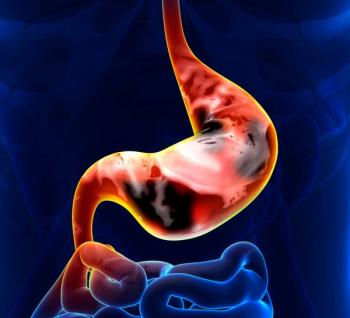
Could Blood Test Detect Pancreatic Cancer?
Using two new diagnostic panels based on microRNA in whole blood, researchers were able to distinguish patients with pancreatic cancer from healthy control patients.
Using two new diagnostic panels based on microRNA in whole blood, researchers were able to distinguish patients with pancreatic cancer from healthy control patients. If further tested and validated, these results indicated that a blood test could have clinical value in identifying patients with pancreatic cancer. The
“Today no screening tools are available for patients with pancreatic cancer,” study author Julia S. Johansen, MD, of Copenhagen University Hospital, Denmark, told Cancer Network. Patients are often diagnosed at an advanced stage when the disease is no longer operable. “Thus, a sensitive biomarker in blood like our panels of microRNA could make a difference so more patients could be diagnosed at an early stage.”
Johansen and colleagues conducted a case control study of 409 patients with pancreatic cancer, 25 patients with chronic pancreatitis and 312 healthy participants. MicroRNA was analyzed separately in discovery cohort, a training cohort and a validation cohort. They analyzed microRNA from pretreatment whole blood using preconfigured TaqMan Human MicroRNA assay in the discovery cohort, and the Fluidigm BioMark System in the training cohort and in the validation cohort.
The analysis identified 38 microRNAs that were significantly dysregulated in patients with pancreatic cancer compared with the healthy controls. In the training cohort, 19 of 36 microRNAs were validated using the Fluidigm method.
The researchers then compared the use of two panels of these microRNAs with the measurement of levels of CA19-9, a compound that is often elevated in pancreatic cancer. The performance of the panels was strengthened when combined with measuring CA19-9, compared with measuring CA19-9 alone.
“We have for the first time identified a panel of microRNA in blood that in combination with serum CA 19-9 could identify patients with pancreatic cancer from healthy blood donors and patients with chronic pancreatitis,” Johansen said. “If our results are validated this blood test could have a clinical value to select patients with uncharacteristic symptoms like abdominal pain or weight loss for the proper (and more expensive) diagnostic tools, such as pancreas specific CT-scanning.”
Johansen added that the findings need to be validated in patients from other countries and in patients with low stages of pancreatic cancer. In addition, the microRNA profile also needs to be tested and validated in patients suspected of having pancreatic cancer who have not yet been diagnosed.
In an
“Despite the modest improvements in AUC, the data reported in the study by Schultz et al did not demonstrate that the microRNA signatures provided clinically significant information over serum CA19-9,” they wrote. “Even though the study was relatively large, well-conducted, and addressed the important topic of development of noninvasive methods to detect pancreatic cancer, the authors appropriately acknowledge the exploratory nature of the investigation.”
Newsletter
Stay up to date on recent advances in the multidisciplinary approach to cancer.
















































































